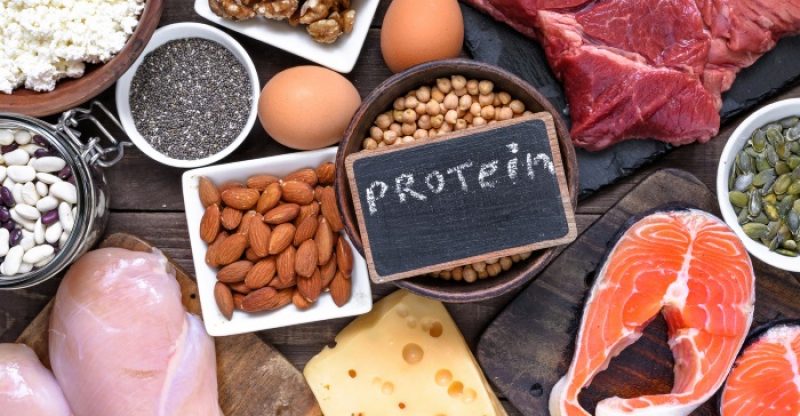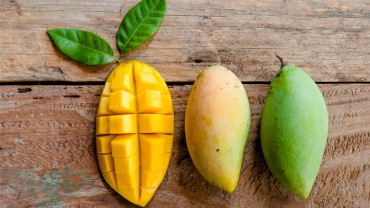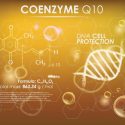How Many Grams of Protein per Day Do You Need?
With all the fads today touting high-protein, no-protein, high-carb, no-carb, and other extreme diets, it can be hard to know what you actually need to be healthy.
Understanding your protein needs, as well as the best sources of protein, can help you not only to stay healthy but have all the energy you need to function throughout your day.
Protein is the essential building block for creating muscle, supporting a healthy metabolism, burning fat, and even supporting the health of your endocrine system, which regulates your hormones.
Therefore, protein is needed both for your health and for the healing of damaged cells and tissues.
But, how much protein do you actually need per day to be well?
We dispel the myths and help you make sense of your protein needs in our guide to daily protein intake.
Keep reading to learn everything you wanted to know about protein, and how much you need each day.
Understanding Your Daily Protein Needs
For proper regeneration, many of your cells, tissues, and organs require protein.
Protein is the primary building block for lean muscle, and it is necessary to many important body functions.
Protein is essential to the healing process, and any injury or illness will require protein for proper rejuvenation.
Your protein needs vary depending on several factors, whether they are for everyday healing and rejuvenation, or for if you are trying to burn fat or build muscle.
Your nutritional needs will always be dependent on your age, weight, and general health, as well.
Let’s start with the protein needs for your general health and well-being.
To calculate your needs, first, start with your body weight and divide that number by two.
This represents the number of grams of protein you need each day to support body functions, repair tissues, and stay healthy.
If you weigh 200 pounds, then, you require about 100 grams of protein each day.
If you consider your needs per meal, you can divide your total protein intake by three, which will tell you your daily meal target.
So, your 100 grams per day would equal about 33 grams of protein per meal.
Or, if you eat several smaller meals, you can divide that total by how often you eat each day.
Protein for Fat Burning
If your health goal is to burn fat, you will want to increase your protein intake.
To calculate your fat-burning protein needs, multiply your body weight by 0.7.
This will give you your recommended daily intake of protein.
You should replace some of the carbohydrates in your diet with this extra protein to promote fat burning and weight loss.
The same 200-pound person would, therefore, require about 140 grams of protein per day to burn fat.
That is about 35 grams of protein per meal if you eat four meals per day.
Protein for Muscle Building
If your health goal is to build muscle fast or to become more toned, your protein needs are different, since your muscles are made almost entirely of protein.
For muscle building, your daily grams of protein should be equal to your body weight.
Our 200-pound person who is trying to build muscle, then, would be about 200 grams of protein per day.
This is about 50 grams of protein in each of your four meals per day.
So, your protein needs, as you can see, vary quite a bit depending on your goals.
Now that we know how much is needed, it is important to understand what foods are the best sources of protein, and what sources of protein are the most appropriate for your health.
The Best Sources of Protein
You may have heard the term “complete protein” at some point.
Proteins are actually made up of a combination of 20 different amino acids.
Your body is able to produce all but nine of these amino acids.
When a food contains all nine of these amino acids, it is said to be a complete protein.
Meat and eggs are generally complete proteins.
Most plant-based sources are not complete, with a few exceptions.
You do not need to eat all nine essential amino acids in each meal, though, to be healthy.
As long as you consume these throughout your day, you do not need to be concerned with the notion of how “complete” your protein source is.
High-Protein Animal Sources
Meats (grams of protein per three-ounce serving):
- Chicken, skinless – 28 grams
- Steak – 26 grams
- Turkey, roasted – 25 grams
- Lamb – 23 grams
- Pork – 22 grams
- Ham – 14 grams
- 1 (one) Large Egg – 6 grams
- Salmon – 22 grams
- Tuna – 22 grams
- Shrimp – 20 grams
- Lobster – 16 grams
- Scallops – 14 grams
Dairy Product (grams of protein per serving):
- Greek Yogurt – 6 oz., 18 grams
- Cottage Cheese (1% fat) – 4 oz., 14 grams
- Regular Yogurt (nonfat) – 1 cup, 11 grams
- Milk, Skim – 1 cup, 8 grams
- Soy milk – 1 cup, 8 grams
- Mozzarella (part skim) – 1 oz., 7 grams
- String Cheese (nonfat) – 1 piece, 6 grams
High-Protein Plant Sources
Legumes and Grains (grams of protein per one-half cup serving):
- Pinto Beans – 11 grams
- Adzuki Beans – 9 grams
- Lentils – 9 grams
- Edamame – 9 grams
- Black Beans – 8 grams
- Red Kidney Beans – 8 grams
- Chickpeas – 7 grams
- Black-eyed Peas – 7 grams
- Fava Beans – 7 grams
- Wheat Berries – 6 grams
- Kamut – 6 grams
- Lima Beans – 6 grams
- Quinoa – 4 grams
Nuts and Seeds (grams of protein per one-ounce serving):
- Soy Nuts – 12 grams
- Pumpkin Seeds – 9 grams
- Peanuts – 7 grams
- Peanut Butter – 7 grams
- Almonds – 6 grams
- Pistachios – 6 grams
- Flax Seeds – 6 grams
- Sunflower Seeds – 6 grams
- Chia Seeds – 5 grams
- Walnuts – 4 grams
- Cashews – 4 grams
Vegetables (grams of protein per one-cup cooked serving):
- Peas, Green – 4 grams
- Spinach – 5 grams
- Collards – 5 grams
- Mustard Greens – 4 grams
- Swiss Chard – 4 grams
- Yellow Sweet Corn – 5 grams
- Asparagus – 4 grams
- Artichokes – 4 grams
- Brussels sprouts – 4 grams
- Button mushrooms – 4 grams
- Portobello mushrooms – 4 grams
- Shiitake mushrooms – 4 grams
- Broccoli – 4 grams
Types and Sources of Protein Powders
As people are trying to incorporate more protein into their diet, and are reaching for foods that are easy to eat or drink on the go, protein powders are more popular than ever before.
These concentrated sources of protein are made from one of several sources, including eggs, dairy, peas, soybeans, or rice.
Protein powders generally come in three different forms.
- Protein concentrates are created by extracting the protein from whole foods. This process involves heat, and either acid or enzymes. The majority of calories in these protein powders comes from protein, while up to one third may come from carbohydrates and fat.
- Protein isolates take the above process a step further to remove most of the fat and carbohydrates, isolating just the protein until it composes nearly all of the calories in the powder.
- Protein hydrolysates continue the process by one step by breaking the bonds of the amino acids in the protein molecules. Your body can them absorb the protein more quickly and easily.
Many protein powders also contain additional minerals and vitamins, particularly calcium.
It is important to note that protein powders are not necessary if your diet is already rich in food-based sources of protein.
Those who train regularly, such as athletes, find more benefit from using protein powder supplements than those who are not as active, or who are not actively trying to burn fat or maximize muscle gain.
Protein powders are also helpful for those whose diets lack sources of protein, such as the elderly, or vegans with other dietary restrictions.
Sources of Protein in Supplements
Whey protein is one of the most commonly found in supplements.
Whey comes from milk and is the liquid that separates from the solids during the cheese-making process.
Whey contains some lactose, but whey protein isolates have very little, as the sugar is burned off during the processing of the protein.
Whey is digested quickly and benefits those seeking muscle growth and recovery.
It is an excellent protein source for building muscle mass.
Casein is a protein also found in milk, but this type of protein takes longer to digest and absorb.
Casein remains in the stomach longer, providing your muscles with a gradual, steady exposure of amino acids.
There is some evidence that casein protein may help those who are overweight build more muscle and lose more fat than other sources of protein supplements (1).
Pea protein is a popular protein supplement choice both for those with sensitivities or allergies to dairy or other animal products and for vegans.
Pea protein comes from the yellow split pea, and is easily digestible, in addition to promoting feelings of fullness and the building of muscle.
Little research on humans is available about the efficacy of this protein supplement source versus that of other sources.
Hemp, brown rice, and mixed-plant powders are other plant-based sources of protein for supplements that are increasing in popularity and availability.
Hemp contains essential omega-3 fatty acids, and brown rice can provide many of the same benefits as other animal-based sources of protein.
In order to get a complete protein from supplement powder, though, it may be necessary to use a mixture of plants that contains all the amino acids necessary for muscle building and fat burning.
Plant protein takes longer than animal sources of protein for the body to digest, due to their high fiber content.
While this means the amino acids are not as readily available to muscles for repair after exercise, it does mean the supply of amino acids is slower and steadier when provided in these forms.
Can You Eat Too Much Protein?
Eating a healthy, well-rounded diet is the easiest way to obtain the protein you need to maintain your optimal health.
When you are eating large amounts of protein, that also means you are eating less of the other macronutrients you need to be healthy, including fiber, carbohydrates, and healthy fats.
Consuming a great deal more protein than the recommended daily intake means you are depriving your body of other essential nutrients, so stick with a moderate approach.
Your body can only absorb and use so much protein at once, so eating excessive amounts can lead either to weight gain or to the elimination of protein in your urine.
A diet that instead incorporates a moderate amount of protein in each meal and snack, while staying within reasonable caloric limits for your weight and activity level, will ensure you have all the nutrients you need without any extra calories.
Precautions
Your protein needs vary widely based on a variety of factors including your weight, activity level, and health goals.
While the average, mostly sedentary person needs about one gram of protein for every two pounds of body weight, those who are more athletic or active, or those trying to build muscle or lose weight, should aim for up to twice that amount.
Proteins are made up of amino acids, and while our bodies can manufacture many of these, nine must come from the foods we eat.
Foods that contain protein comprised of all nine of these amino acids provide complete protein.
Eating enough protein can help you lose weight, regulate your blood sugar, improve your cognition, and support your bone and muscle strength.
Eating the proper amount of protein can enhance your mood, slow the aging process, and help support your heart health, too.
The foods highest in protein include meats, dairy products, legumes, grains, and some vegetables.
Opt for meat and dairy products that are the organic, grass-fed, and free range.
Choose products that come from antibiotic-free animals, and that have not been heat-treated.
Eating a well-rounded diet that contains many different types of foods is the healthiest choice, regardless of your fitness goals.
Your body still needs carbohydrates, healthy fats, and fiber, in addition to protein, in order to be healthy.
Aim for a diet that is comprised of roughly 30 percent protein, 25 percent healthy fats, and the remainder carbohydrates.
FDA Compliance
The information on this website has not been evaluated by the Food & Drug Administration or any other medical body. We do not aim to diagnose, treat, cure or prevent any illness or disease. Information is shared for educational purposes only. You must consult your doctor before acting on any content on this website, especially if you are pregnant, nursing, taking medication, or have a medical condition.
HOW WOULD YOU RATE THIS ARTICLE?






